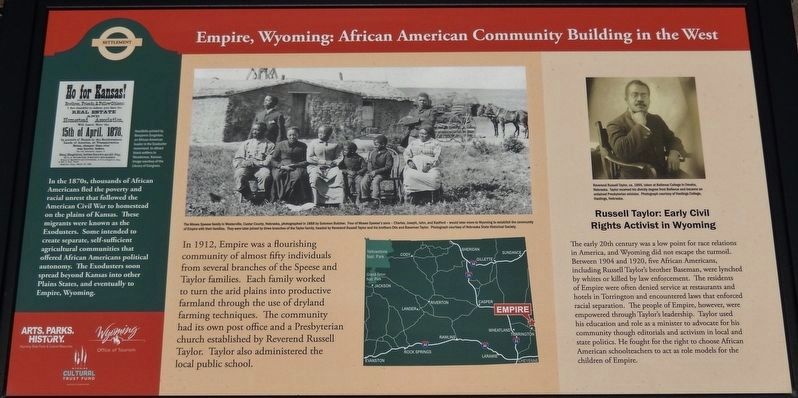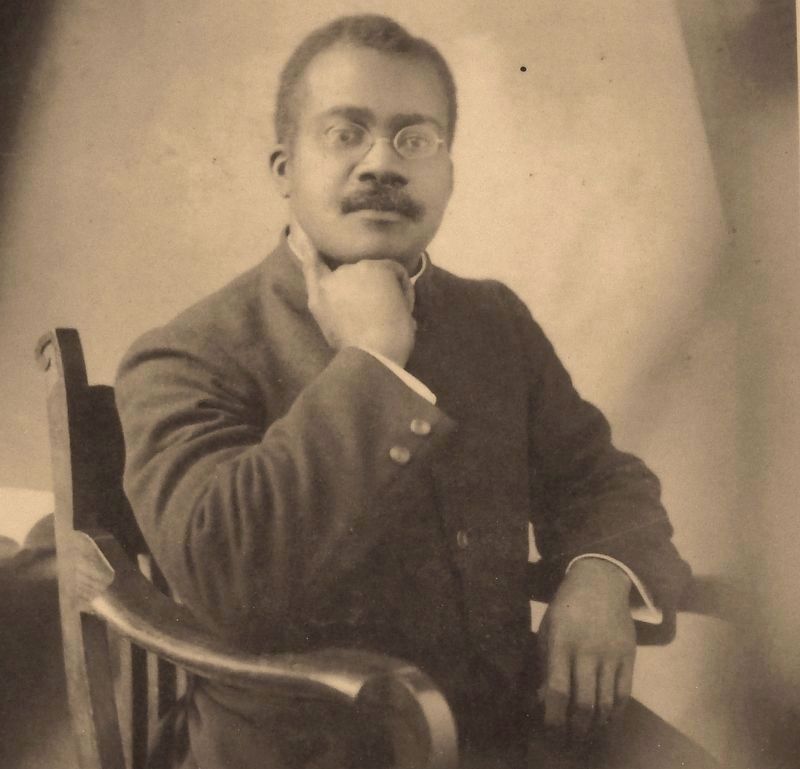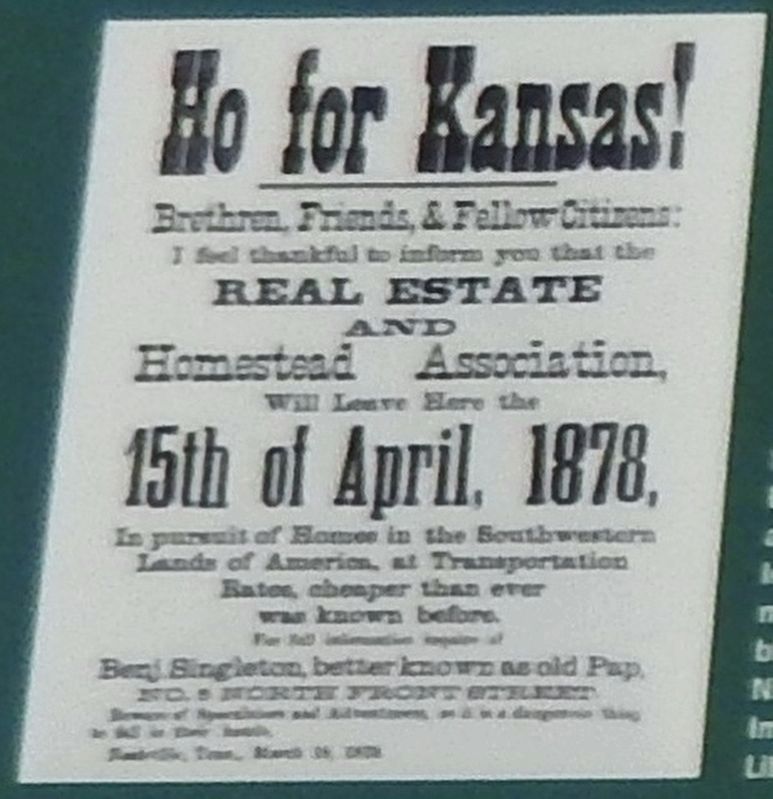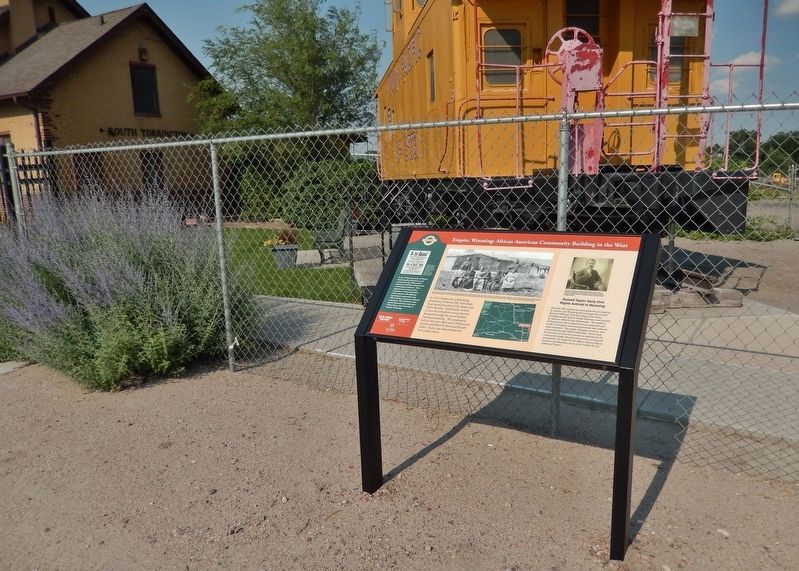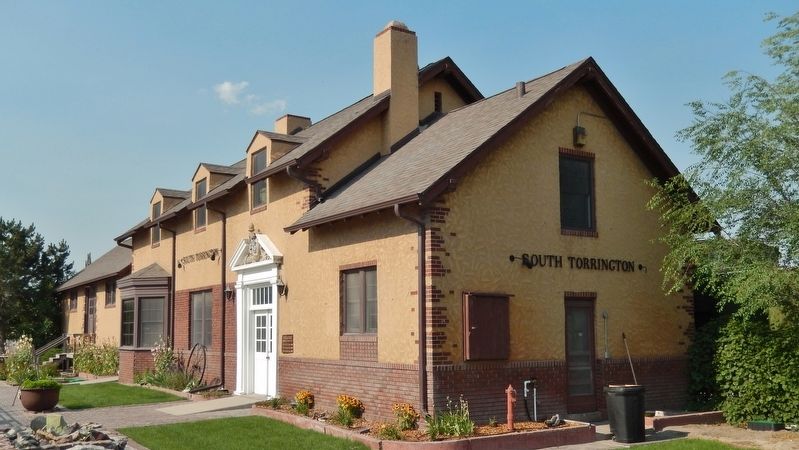Torrington in Goshen County, Wyoming — The American West (Mountains)
Empire, Wyoming: African American Community Building in the West
Inscription.
In the 1870s, thousands of African Americans fled the poverty and racial unrest that followed the American Civil War to homestead on the plains of Kansas. These migrants were known as the Exodusters. Some intended to create separate, self-sufficient agricultural communities that offered African Americans political autonomy. The Exodusters soon spread beyond Kansas into other Plains States, and eventually to Empire, Wyoming.
In 1912, Empire was a flourishing community of almost fifty individuals from several branches of the Speese and Taylor families. Each family worked to turn the arid plains into productive farmland through the use of dryland farming techniques. The community had its own post office and a Presbyterian church established by Reverend Russell Taylor. Taylor also administered the local public school.
Russell Taylor: Early Civil Rights Activist in Wyoming
The early 20th century was a low point for race relations in America, and Wyoming did not escape the turmoil. Between 1904 and 1920, five African Americans, including Russell Taylor's brother Baseman, were lynched by whites or killed by law enforcement. The residents of Empire were often denied service at restaurants and hotels in Torrington and encountered laws that enforced racial separation. The people of Empire, however, were empowered through Taylor's leadership. Taylor used his education and role as a minister to advocate for his community though editorials and activism in local and state politics. He fought for the right to choose African American schoolteachers to act as role models for the children of Empire.
Topics. This historical marker is listed in these topic lists: African Americans • Settlements & Settlers.
Location. 42° 2.865′ N, 104° 11.031′ W. Marker is in Torrington, Wyoming, in Goshen County. Marker is on CanAm Highway (U.S. 85) 0.2 miles north of East 3rd Avenue, on the right when traveling north. Marker is located at the Goshen County Homesteaders Museum, on the east side of the parking lot, near the Union Pacific caboose exhibit. Touch for map. Marker is at or near this postal address: 501 CanAm Highway, Torrington WY 82240, United States of America. Touch for directions.
Other nearby markers. At least 8 other markers are within 8 miles of this marker, measured as the crow flies. Oregon Trail (a few steps from this marker); Ben Trout Homestead Shack (within shouting distance of this marker); a different marker also named Oregon Trail (approx. half a mile away); Cold Springs (approx. half a mile away); CPL. Travis Snow Memorial Building (approx. 1.2 miles away); Replica of the Statue of Liberty (approx. 1.2
miles away); Stuart’s 1812-13 Astorian Party Campsite (approx. 3.9 miles away); a different marker also named The Oregon Trail (approx. 7.3 miles away). Touch for a list and map of all markers in Torrington.
Regarding Empire, Wyoming: African American Community Building in the West.
Empire was founded in 1908 by African American settlers who came from Nebraska to build a racially self-sufficient, politically autonomous community in the Equality State. The African Americans in Empire dealt with racism on a daily basis, but found a voice to fight back through the leadership of Russell Taylor. In his role as a teacher and Presbyterian minister, Taylor advocated for his people at local political meetings and at state and national conferences hosted by the Presbyterian Church, U.S.A. Empire thrived for about a decade, but vanished from the map in the mid-1920s.
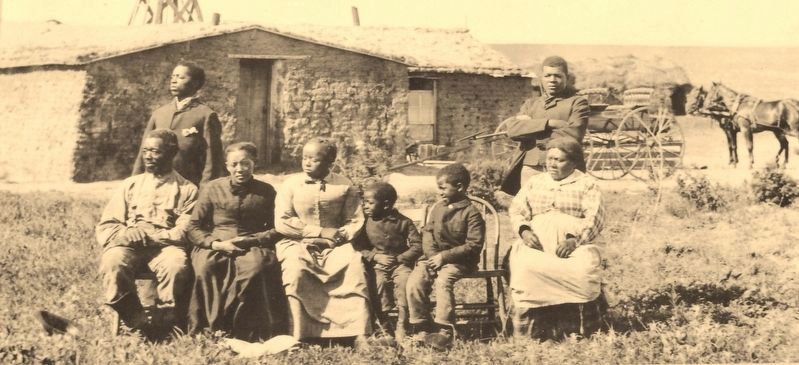
Courtesy of Nebraska State Historical Society, 1888
4. Marker detail: Speese Family
The Moses Speese family in Westerville, Custer County, Nebraska, photographed in 1888 by Solomon Butcher. Four of Moses Speese's sons - Charles, Joseph, John, and Radford - would later move to Wyoming to establish the community of Empire with their families. They were later joined by three branches of the Taylor family, headed by Reverend Russell Taylor and his brothers Otis and Baseman Taylor.
Credits. This page was last revised on August 26, 2021. It was originally submitted on July 8, 2018, by Cosmos Mariner of Cape Canaveral, Florida. This page has been viewed 605 times since then and 48 times this year. Photos: 1. submitted on July 8, 2018, by Cosmos Mariner of Cape Canaveral, Florida. 2, 3, 4. submitted on July 9, 2018, by Cosmos Mariner of Cape Canaveral, Florida. 5. submitted on July 8, 2018, by Cosmos Mariner of Cape Canaveral, Florida. 6. submitted on July 9, 2018, by Cosmos Mariner of Cape Canaveral, Florida. • Andrew Ruppenstein was the editor who published this page.
